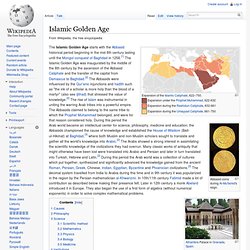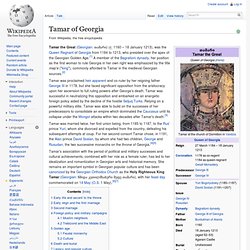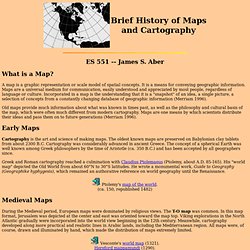

The Princeton Encyclopedia of Classical Sites (eds. Richard Stillwell, William L. MacDonald, Marian Holland McAllister) Islamic Golden Age. Causes[edit] With a new, easier writing system and the introduction of paper, information was democratized to the extent that, probably for the first time in history, it became possible to make a living from simply writing and selling books.[4] The use of paper spread from China into Muslim regions in the eighth century CE, arriving in Spain (and then the rest of Europe) in the 10th century CE.

It was easier to manufacture than parchment, less likely to crack than papyrus, and could absorb ink, making it difficult to erase and ideal for keeping records. Islamic paper makers devised assembly-line methods of hand-copying manuscripts to turn out editions far larger than any available in Europe for centuries.[5] It was from these countries that the rest of the world learned to make paper from linen.[6] Philosophy[edit] Ibn Rushd and Ibn Sina played a major role in saving the works of Aristotle, whose ideas came to dominate the non-religious thought of the Christian and Muslim worlds.
Tamar of Georgia. Tamar the Great (Georgian: თამარი) (c. 1160 – 18 January 1213), was the Queen Regnant of Georgia from 1184 to 1213, who presided over the apex of the Georgian Golden Age.[1] A member of the Bagrationi dynasty, her position as the first woman to rule Georgia in her own right was emphasized by the title mep'e ("king"), commonly afforded to Tamar in the medieval Georgian sources.[2] Tamar was proclaimed heir apparent and co-ruler by her reigning father George III in 1178, but she faced significant opposition from the aristocracy upon her ascension to full ruling powers after George's death.

Tamar was successful in neutralizing this opposition and embarked on an energetic foreign policy aided by the decline of the hostile Seljuq Turks. Relying on a powerful military élite, Tamar was able to build on the successes of her predecessors to consolidate an empire which dominated the Caucasus until its collapse under the Mongol attacks within two decades after Tamar's death.[3] History of maps and cartography. ES 551 -- James S.

Aber What is a Map? A map is a graphic representation or scale model of spatial concepts. It is a means for conveying geographic information. Maps are a universal medium for communication, easily understood and appreciated by most people, regardless of language or culture. Old maps provide much information about what was known in times past, as well as the philosophy and cultural basis of the map, which were often much different from modern cartography. History of the Book. History of the Internet. The history of the Internet begins with the development of electronic computers in the 1950s.

Initial concepts of packet networking originated in several computer science laboratories in the United States, Great Britain, and France. The US Department of Defense awarded contracts as early as the 1960s for packet network systems, including the development of the ARPANET (which would become the first network to use the Internet Protocol.) The first message was sent over the ARPANET from computer science Professor Leonard Kleinrock's laboratory at University of California, Los Angeles (UCLA) to the second network node at Stanford Research Institute (SRI). Access to the ARPANET was expanded in 1981 when the National Science Foundation (NSF) funded the Computer Science Network (CSNET).
In 1982, the Internet protocol suite (TCP/IP) was introduced as the standard networking protocol on the ARPANET. Precursors. History of the Internet. Bourgeoisie. The prototypical bourgeois: Monsieur Jourdain, the protagonist of the play Le Bourgeois gentilhomme (1670), by Molière, is the best would-be nobleman that money can buy.

In Marxist philosophy, the term bourgeoisie denotes the social class who owns the means of production and whose societal concerns are the value of property and the preservation of capital, in order to ensure the perpetuation of their economic supremacy in society.[3] Joseph Schumpeter instead saw the creation of new bourgeoisie as the driving force behind the capitalist engine, particularly entrepreneurs who took risks in order to bring innovation to industries and the economy through the process of creative destruction.[4] Etymology[edit] The 16th-century German banker Jakob Fugger and his principal accountant, M. Schwarz, registering an entry to a ledger. The background shows a file cabinet indicating the European cities where the Fugger Banker conducts business. (1517) History[edit] Denotations[edit] Nomenclatura[edit]